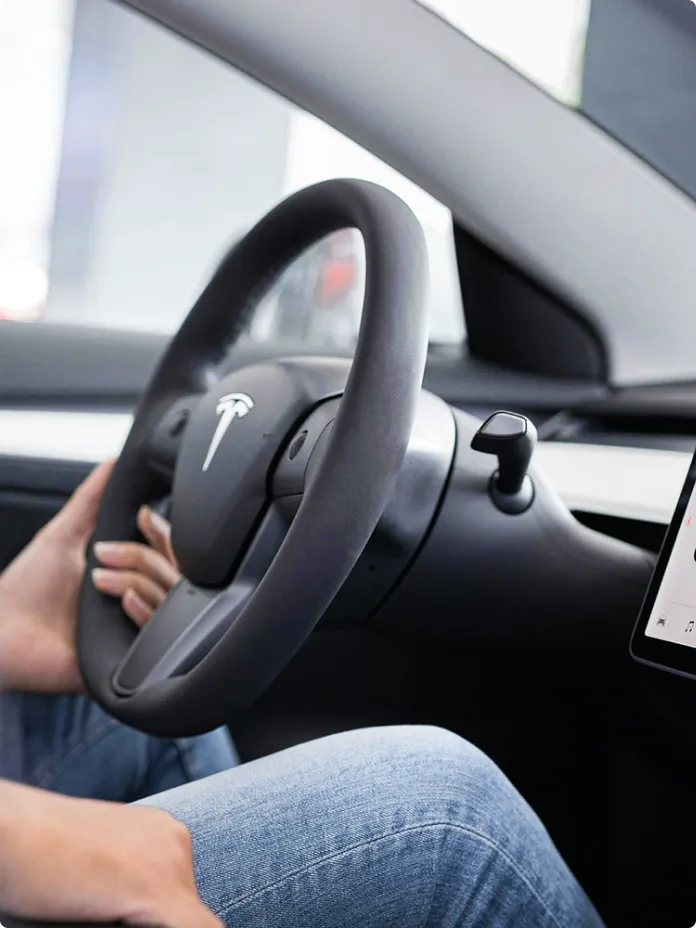EXEIN FOR AUTOMOTIVE
Smart automotives secured from within.
Exein enhances automotive cybersecurity by securing in-vehicle firmware, protecting critical systems from attacks, and ensuring compliance with evolving safety standards.



Securing the future of connected automotives
Exein embeds intelligent security directly into the firmware of your vehicles, delivering real-time threat detection, anomaly response, and compliance-ready protection at the hardware level.
Increase in large-scale cyber incidents since 2022
of all automotive cyberattacks come through unsecured infotainment systems
Smart security for smart automotives

Security at all levels

Zero downtime

Smart growth, secured
case studies
FAQ
From integration to incident response, explore common questions and how Exein helps secure what matters.
What is automotive cybersecurity and why is it critical for connected vehicles?
Automotive cybersecurity protects connected vehicles from digital attacks and unauthorized access. It secures IoT-enabled components, including Electronic Control Units (ECUs), infotainment systems, sensors, and telematics units. Modern vehicles are vulnerable through multiple attack vectors:
- Controller Area Network (CAN): Controls critical functions like ignition and brakes.
- Infotainment systems: Connect to the internet and access personal data.
- Over-the-air (OTA) update systems: Allow remote software modifications.
With the automotive IoT market expected to reach $946.29 billion by 2033, securing these systems is essential to prevent vehicle theft, protect personal data, and ensure passenger safety.
What are the main cybersecurity threats facing modern vehicles?
Primary attack methods:
- CAN injection attacks using tools like CAN Invader.
- Infotainment system exploitation through internet connections.
- Man-in-the-middle (MitM) attacks intercepting communications.
- Physical access through USB or OBD-II diagnostic ports.
Attack statistics:
- Server-related incidents increased from 35% to 43% in 2023.
- Infotainment-related incidents doubled from 8% to 15%.
These threats can result in vehicle theft, compromised safety systems, and stolen personal data.
What are the key automotive cybersecurity standards and regulations?
The UN Economic Commission for Europe (UNECE) introduced automotive cybersecurity regulations through WP.29. UNECE regulations:
- Regulation No. 155: Mandates Cybersecurity Management Systems (CSMS) throughout vehicle development and the supply chain.
- Regulation No. 156: Requires Software Update Management Systems (SUMS) for secure updates.
ISO standards:
- ISO/SAE 21434: Integrates cybersecurity throughout the vehicle lifecycle with secure development practices.
- ISO 24089: Provides guidelines for secure software update processes.
These regulations require manufacturers to conduct regular Threat Analysis and Risk Assessments (TARA) and implement security measures before vehicle type approval.
How can automotive manufacturers implement effective cybersecurity solutions?
Effective automotive cybersecurity requires multi-layered protection throughout the vehicle lifecycle. Essential components:
- Runtime threat detection for real-time attack blocking.
- Firmware analysis for vulnerability assessment.
- Network monitoring for suspicious activity detection.
- Filesystem monitoring for malicious operation tracking.
Implementation requirements:
- Deploy lightweight security agents on ECUs and infotainment systems.
- Establish centralized security management platforms.
- Integrate Security Operations Centers (SOCs) with SIEM.
- Ensure compatibility across Linux, RTOS, and Android systems.
Success requires collaboration between manufacturers, suppliers, and cybersecurity specialists.
